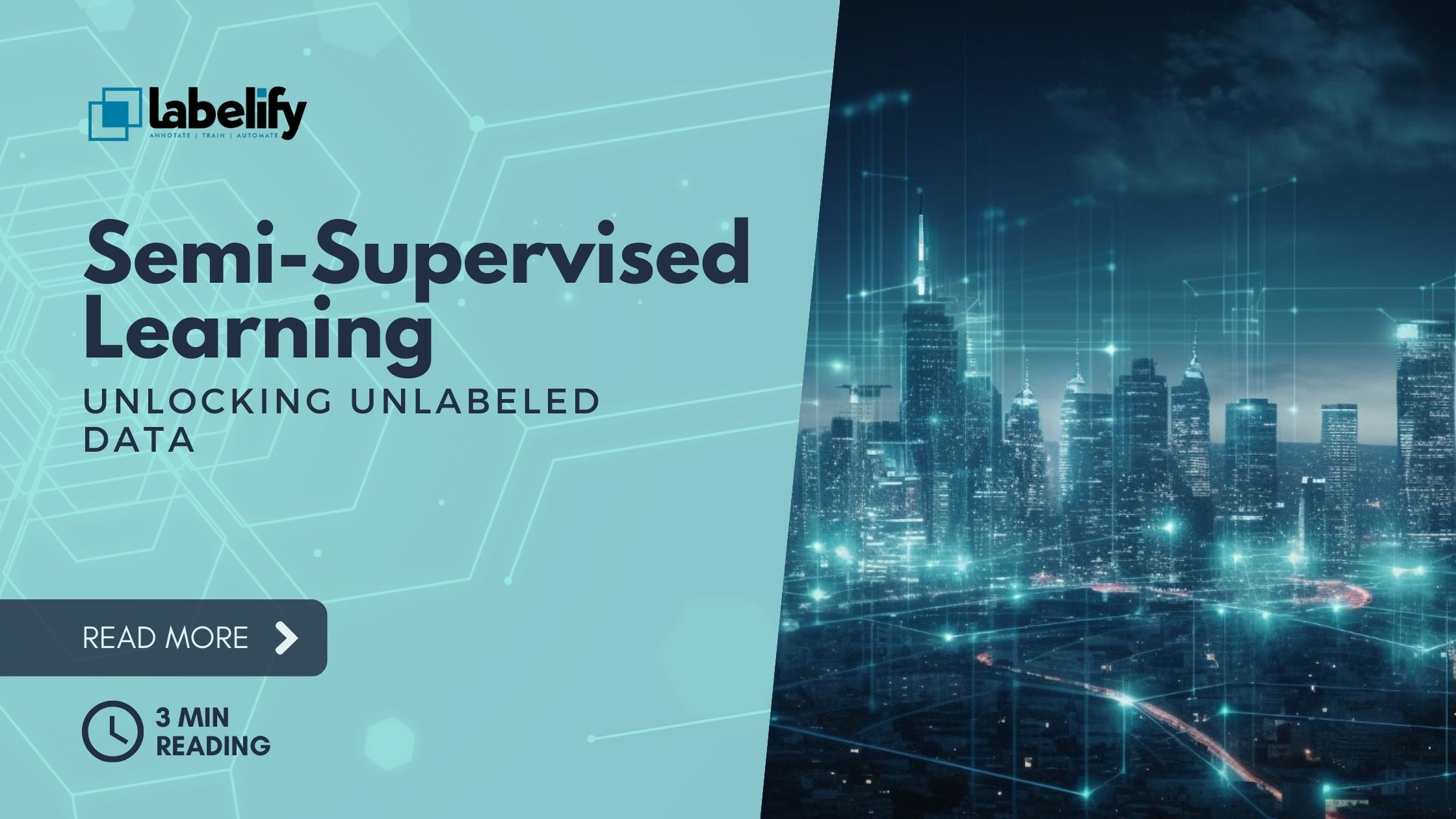Welcome to our ultimate guide to semi-supervised learning! We’ll take you on a journey through the captivating world of this powerful technique.
By combining labeled and unlabeled data, we can revolutionize model performance in scenarios with limited labeled data.
From self-training to co-training, multi-view learning, and more, we’ll cover all the cutting-edge techniques.
Get ready to enhance your understanding and liberate your machine learning skills with our concise and visionary guide.
Let’s dive in and unlock the potential of semi-supervised learning!
Key Takeaways
- Semi-supervised learning is a hybrid technique that combines supervised and unsupervised learning.
- It utilizes both labeled and unlabeled data to improve model performance in scenarios with limited labeled data.
- Semi-supervised learning can save time and resources by leveraging unlabeled data, particularly in situations where labeling data is difficult or requires domain expertise.
- Techniques in semi-supervised learning include self-training, co-training, multi-view learning, generative models, graph-based methods, and semi-supervised support vector machines.
Basics of Semi-Supervised Learning
In understanding the basics of semi-supervised learning, we utilize both labeled and unlabeled data to improve model performance. Semi-supervised learning algorithms and models leverage the power of unlabeled data to complement the limited labeled data we have.
This innovative approach allows us to make the most out of the available resources and push the boundaries of traditional supervised learning. By incorporating unlabeled data, we can uncover hidden patterns and relationships that would have otherwise gone unnoticed.
Semi-supervised learning opens up a world of possibilities, allowing us to tackle complex problems with limited labeled data. It liberates us from the constraints of fully labeled datasets and empowers us to make more accurate predictions.
With semi-supervised learning, we can unlock the true potential of our models and revolutionize the field of machine learning.
Advantages and Disadvantages
We can now explore the advantages and disadvantages of semi-supervised learning to understand its potential and limitations.
Semi-supervised learning algorithms offer several benefits, such as leveraging unlabeled data to save time and resources, especially in scenarios where labeling data is difficult or requires domain expertise. It can also boost model performance when labeled data is limited and unlabeled data is plentiful. However, it’s important to note that a fully-labeled dataset generally trains a better model than a partially-labeled dataset.
On the other hand, there are limitations to semi-supervised learning. It may not be suitable for all scenarios, and its effectiveness depends on the assumptions made, such as the continuity, cluster, decision boundary, and manifold assumptions. Additionally, evaluating the performance of semi-supervised learning algorithms can be challenging. Common evaluation metrics for semi-supervised learning include accuracy, precision, recall, and F1-score, but they may not fully capture the effectiveness of the model.
To summarize, while semi-supervised learning offers advantages in terms of leveraging unlabeled data and improving model performance, it also has limitations and requires careful evaluation to ensure its effectiveness.
Assumptions in Semi-Supervised Learning
Let’s delve into the assumptions that underlie semi-supervised learning.
Two key assumptions in this field are the manifold assumption and the continuity assumption.
The manifold assumption asserts that high-dimensional data can be effectively represented in a lower-dimensional space. This assumption allows us to leverage the structure and patterns within the data to make predictions.
On the other hand, the continuity assumption suggests that nearby data points are likely to have the same label. By assuming that the data is continuous, we can exploit the relationships and similarities between labeled and unlabeled examples to improve model performance.
These assumptions form the foundation of semi-supervised learning, enabling us to harness the power of unlabeled data and enhance the accuracy and efficiency of our models.
Self-Training Technique
To implement the self-training technique in semi-supervised learning, we start by iteratively utilizing the model’s predictions on unlabeled data to generate pseudo-labels and then retrain the model.
This approach allows us to leverage the abundance of unlabeled data and make use of the model’s own predictions to generate labels for those data points.
However, it’s important to note the limitations of self-training. One major drawback is the potential propagation of errors. Since the initial model’s predictions on unlabeled data may not be accurate, using these pseudo-labels for retraining can lead to the reinforcement of incorrect predictions.
Additionally, self-training may not be as effective as other semi-supervised techniques like co-training or multi-view learning, which leverage multiple models or different data representations to improve performance.
It’s crucial to consider these factors and compare self-training with other techniques to determine the most suitable approach for a given scenario.
Co-Training Technique
Continuing from the previous subtopic, we’ll now delve into the co-training technique in semi-supervised learning.
Co-training is an innovative approach that leverages multiple views of the data to train separate models, which then exchange and learn from each other’s predictions. This technique has shown promising results in various domains, including text classification.
Here is a visual representation of key ideas in co-training technique:
- Performance comparison of co-training with other semi-supervised learning techniques:
- Co-training has demonstrated superior performance compared to self-training and other traditional semi-supervised learning methods.
- It utilizes multiple views of the data, allowing models to learn from different perspectives and improve overall performance.
- Co-training for text classification: challenges and solutions:
- One of the challenges in text classification is the lack of labeled data, making it difficult to train accurate models.
- Co-training addresses this challenge by leveraging both labeled and unlabeled data to improve classification performance.
- Solutions include using different feature representations, such as bag-of-words and tf-idf, to capture diverse aspects of text data.
Multi-View Learning Approach
Moving forward from the co-training technique, we can explore the multi-view learning approach, which enhances semi-supervised learning by leveraging multiple perspectives of the data. In multi-view learning, different representations or features of the data are utilized to improve model performance. This approach recognizes that there can be multiple ways to view and represent the same data, and by considering these different views, we can gain a more comprehensive understanding of the underlying patterns and relationships.
To illustrate the concept of multi-view learning, let’s consider a dataset with two views: View 1 and View 2. Each view represents the data from a different perspective or set of features. By combining the information from both views, we can effectively capture the complexity of the data and improve the model’s ability to generalize and make accurate predictions.
| Data Point | View 1 | View 2 |
|---|---|---|
| Data 1 | 0.84 | 0.71 |
| Data 2 | 0.52 | 0.96 |
| Data 3 | 0.73 | 0.12 |
In multi-view learning, feature selection is a crucial step. It involves identifying the most informative features from each view that contribute to the overall predictive power of the model. By selecting the right features, we can reduce noise and irrelevant information, and focus on the ones that truly capture the underlying structure of the data.
Through the multi-view learning approach, we can unlock the true potential of semi-supervised learning by harnessing the power of multiple perspectives and selecting the most informative features. This enables us to overcome the limitations of traditional supervised and unsupervised learning methods and achieve more accurate and robust models.
Other Techniques in Semi-Supervised Learning
Let’s delve into the realm of semi-supervised learning by exploring additional techniques that can further enhance model performance and leverage the potential of unlabeled data.
- Active learning approach:
- Active learning allows the model to query the most informative unlabeled data points for labeling.
- By actively selecting which samples to label, active learning reduces the labeling effort while maximizing the model’s learning capacity.
- Generative models in semi-supervised learning:
- Generative models, such as variational autoencoders and generative adversarial networks, can be used to generate realistic synthetic data.
- These generative models can then be combined with the labeled data to train a semi-supervised model.
Overview of V7 Platform
The V7 platform is a comprehensive tool that enables us to label data and train ML models for various computer vision tasks. It provides data labeling tools and auto annotation capabilities, making the data labeling process easier and faster. With V7, we can annotate images, videos, and manage datasets seamlessly.
The platform supports a wide range of computer vision tasks, including image classification, semantic segmentation, instance segmentation, and OCR models. It offers a repository of 500+ open datasets, allowing users to access and leverage diverse data for their projects.
Applications in Computer Vision Tasks
Continuing from our overview of the V7 platform, how can we leverage its capabilities in computer vision tasks? With V7’s advanced features, we can apply semi-supervised learning techniques to enhance computer vision models.
Here’s how:
- Active Learning:
- V7’s active learning tools enable us to select the most informative unlabeled data points for labeling, maximizing the use of limited labeled data.
- By iteratively training and selecting data, we can improve model performance while reducing the labeling effort.
- Transfer Learning:
- V7 supports transfer learning, allowing us to use pre-trained models as a starting point for training new models.
- We can leverage the knowledge gained from large labeled datasets in related tasks to improve the performance of models with limited labeled data.
Frequently Asked Questions
How Does Semi-Supervised Learning Differ From Supervised and Unsupervised Learning?
In semi-supervised learning, we leverage both labeled and unlabeled data to train our models. This approach differs from supervised learning, where only labeled data is used, and unsupervised learning, which only relies on unlabeled data.
The benefit of semi-supervised learning is that it can improve model performance when labeled data is limited. By incorporating unlabeled data, we can make more accurate predictions and save time and resources.
This approach offers a powerful solution for scenarios where labeling data is difficult or costly.
Can Semi-Supervised Learning Be Applied to Any Type of Data or Is It Limited to Specific Domains?
Semi-supervised learning is a powerful technique that can be applied to various types of data. The applicability of semi-supervised learning depends on the specific domain and the nature of the data. In some cases, labeled data may be scarce or expensive to obtain, making semi-supervised learning a valuable approach.
However, it does have limitations and challenges. In domains where labeled data is abundant, fully supervised learning may yield better results. It’s important to carefully consider the limitations and challenges before applying semi-supervised learning in any given scenario.
Are There Any Specific Requirements or Considerations for Implementing Semi-Supervised Learning Algorithms?
When implementing semi-supervised learning algorithms, there are several requirements and considerations to keep in mind.
Firstly, it’s important to have a combination of labeled and unlabeled data.
Additionally, the assumptions of continuity, cluster, decision boundaries, and manifold should be taken into account.
Implementing semi-supervised learning may come with challenges such as data limitations and domain limitations.
However, with the right platform support, like the V7 platform for computer vision tasks and model training, these challenges can be overcome.
What Are Some Common Challenges or Limitations Faced in Semi-Supervised Learning?
Challenges and limitations in semi-supervised learning arise from the reliance on both labeled and unlabeled data. One challenge is the difficulty in selecting the optimal amount of labeled data for training.
Additionally, the assumptions made in semi-supervised learning, such as the continuity and cluster assumptions, may not always hold true in real-world scenarios.
Furthermore, the performance of semi-supervised models may not match that of fully-labeled models. However, with innovative techniques and advancements, these challenges can be overcome, leading to greater liberation in model training.
How Does the V7 Platform Specifically Support the Training of ML Models for Computer Vision Tasks?
The V7 platform revolutionizes ML model training for computer vision tasks. With its advanced features, it empowers us to train ML models with ease.
The platform supports image classification, semantic segmentation, instance segmentation, and OCR models, offering a wide range of computer vision capabilities.
Additionally, V7 provides powerful tools for data annotation, video annotation, dataset management, and ML model training. Its auto-annotation capabilities make the data labeling process faster and more efficient.
With V7, we can unlock the full potential of computer vision in ML models.
Conclusion
In conclusion, semi-supervised learning offers a promising solution for improving model performance in scenarios with limited labeled data. By combining the strengths of supervised and unsupervised learning, this hybrid approach opens up new possibilities in the field of machine learning.
From self-training to co-training, multi-view learning, and other techniques, researchers and practitioners have a wide range of tools to explore.
With the advent of cutting-edge platforms like V7, the future of semi-supervised learning looks even brighter.
Let’s continue to push the boundaries of this exciting field and unlock its full potential.




